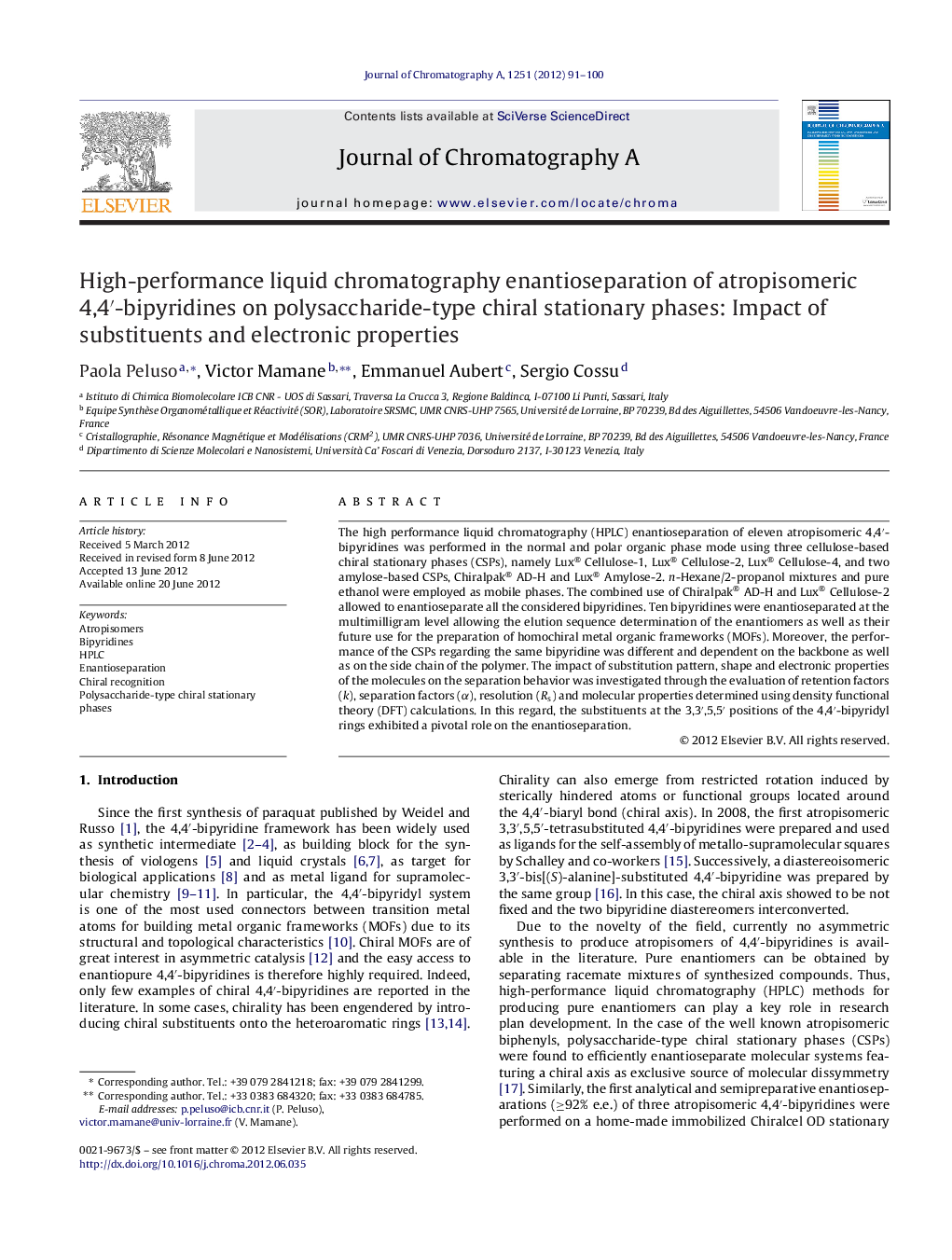| Article ID | Journal | Published Year | Pages | File Type |
|---|---|---|---|---|
| 1202390 | Journal of Chromatography A | 2012 | 10 Pages |
The high performance liquid chromatography (HPLC) enantioseparation of eleven atropisomeric 4,4′-bipyridines was performed in the normal and polar organic phase mode using three cellulose-based chiral stationary phases (CSPs), namely Lux® Cellulose-1, Lux® Cellulose-2, Lux® Cellulose-4, and two amylose-based CSPs, Chiralpak® AD-H and Lux® Amylose-2. n-Hexane/2-propanol mixtures and pure ethanol were employed as mobile phases. The combined use of Chiralpak® AD-H and Lux® Cellulose-2 allowed to enantioseparate all the considered bipyridines. Ten bipyridines were enantioseparated at the multimilligram level allowing the elution sequence determination of the enantiomers as well as their future use for the preparation of homochiral metal organic frameworks (MOFs). Moreover, the performance of the CSPs regarding the same bipyridine was different and dependent on the backbone as well as on the side chain of the polymer. The impact of substitution pattern, shape and electronic properties of the molecules on the separation behavior was investigated through the evaluation of retention factors (k), separation factors (α), resolution (Rs) and molecular properties determined using density functional theory (DFT) calculations. In this regard, the substituents at the 3,3′,5,5′ positions of the 4,4′-bipyridyl rings exhibited a pivotal role on the enantioseparation.
► Chiralpak AD-H and Lux Cellulose-2 allowed to enantioseparate 4,4′-bipyridines. ► Ten out of eleven bipyridines were enantioseparated at the multimilligram level. ► Impact of substituents and electronic properties on enantioseparation is discussed.
